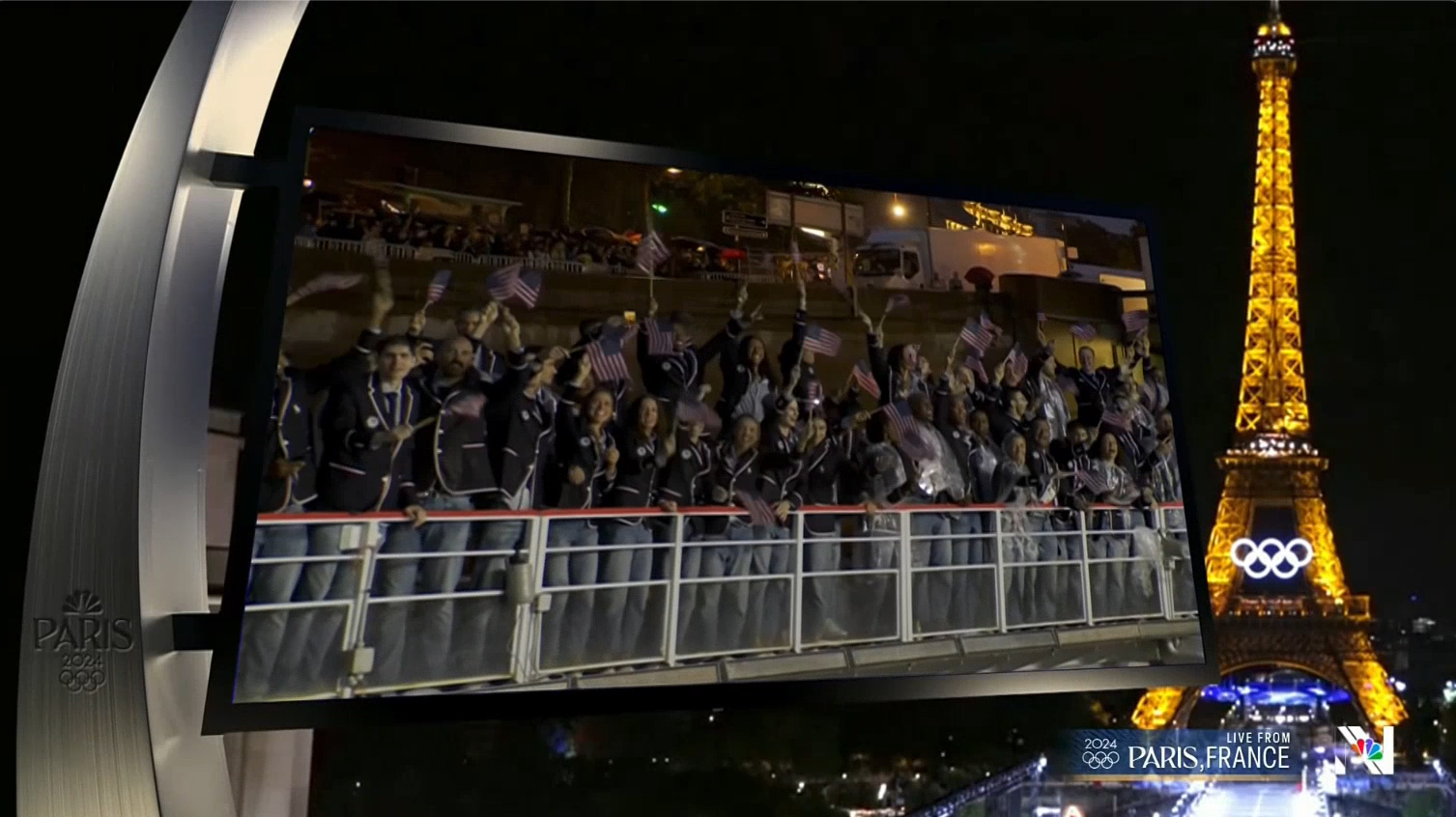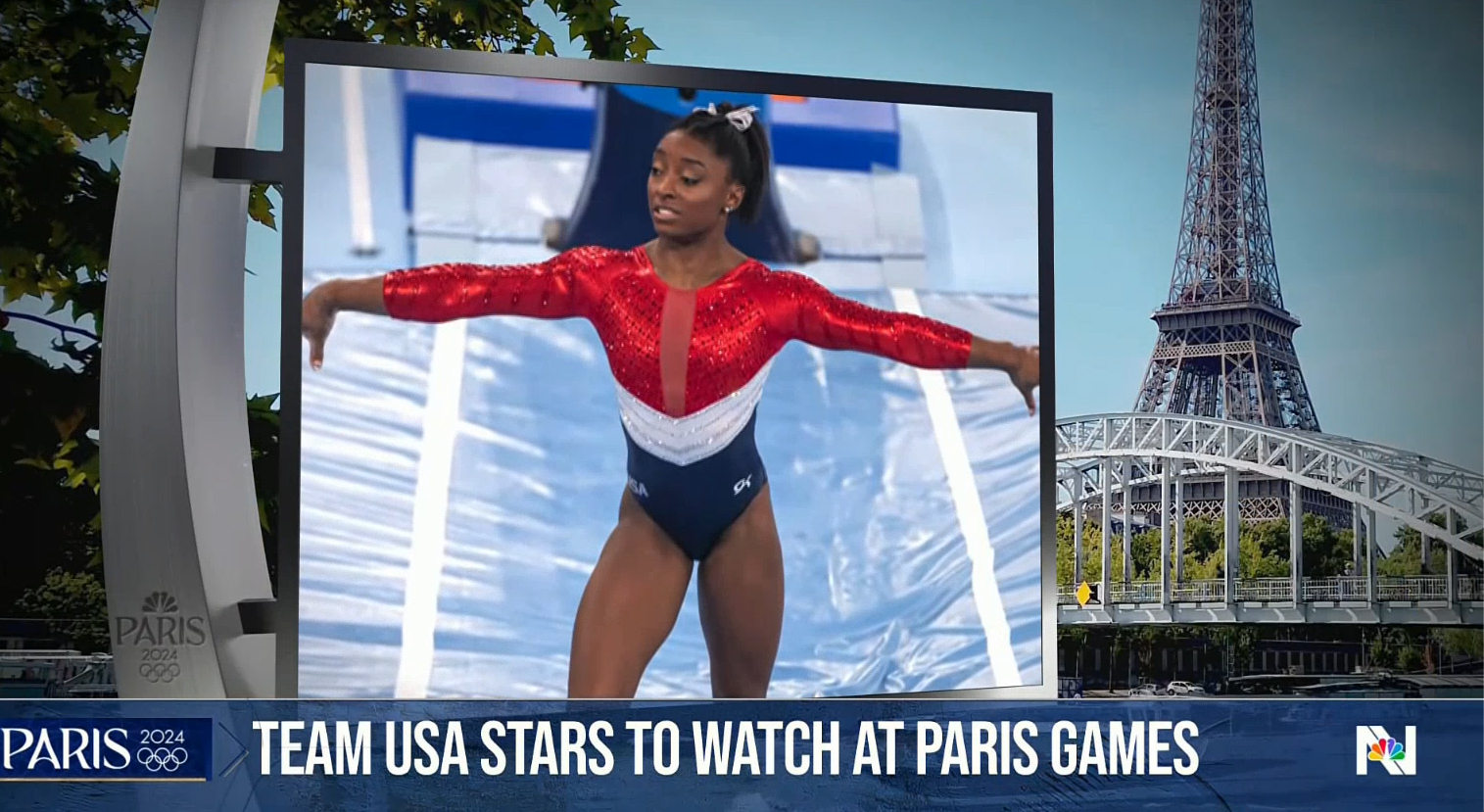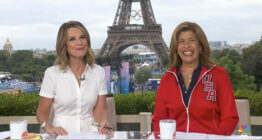‘Nightly’ debuts from Paris with simulated city views for showcasing imagery

Subscribe to NCS for the latest news, project case studies and product announcements in broadcast technology, creative design and engineering delivered to your inbox.
“NBC Nightly News” set up shop near the Arc de Triomphe for its broadcasts from the 2024 Paris Summer Olympics.
The first broadcast from Paris was July 25, 2024, with Tom Llamas filling in for Lester Holt.
Holt anchored July 26, 2024, the night the opening ceremony aired.
The network is set up on either a roof of raised structure near Place Charles de Gaulle with a wraparound blue graphic with NBC peacocks serving as a low railing.
Place Charles de Gaulle is a circular plaza with a dozen streets feeding into it and circling the monument.
The broadcast also duplicated its signature “video on video“-style shots typically shot inside of Studio 1A back in new York City as Holt introduces a story with a simulated screen mounted on a virtual curved element.


The network created two versions of the screen — one with curved support on the left and the other with it on the right. There were also multiple angles available and the background can be filled with any number of Paris cityscapes.
The backgrounds used included some of Paris’ most famous landmarks and included motion.


In addition to appearing a handful of times during Holt’s initial voiceover July 26, “Nightly” also used daytime versions of them during Holt’s interview with Mike Tirico about Team USA.
At least some of these screens included angles where it likely would have been difficult to place a real screen — assuming NBC had built real units and carted them around Paris.
Another hint that the element isn’t real is that the lighting remains consistent no matter where the screen is “placed” as well as there being a repeated moving reflection effect on the frame of the “screen” that would be unlikely to repeat in the exact same pattern if the visual was real. There’s also no hint of any ambient light interacting with the images or screen surface.
The approach allows “Nightly” to continue to use a look similar to what it achieves back in 1A quickly and easily — and without having to set up real screens or video walls (or rely on shooting ones back in New York).
The looks are achieved using templates that let the network quickly drop in imagery to appear in the “screen,” with the graphics software handling skewing the perspective to match the simulated screen’s angles.
Subscribe to NCS for the latest news, project case studies and product announcements in broadcast technology, creative design and engineering delivered to your inbox.





tags
2024 Summer Olympics, lester holt, NBC, NBC News, NBC Nightly News, Tom Llamas, Video on Video
categories
Broadcast Business News, Broadcast Design, Graphics, Heroes, Network Newscast, Olympics